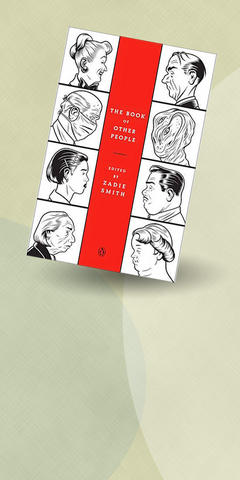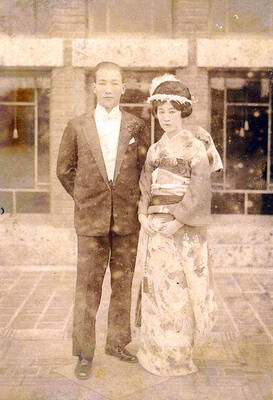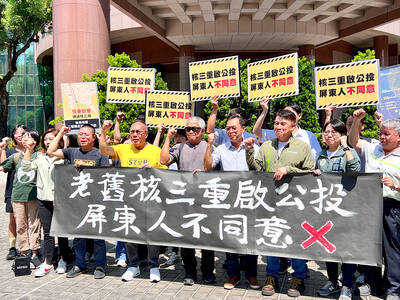All the stories in this lively collection are portraits, mainly of human beings, though a monster with an identity crisis, a giant in search of love and a puppy in need of a home put in appearances as well. While the stories vary widely in quality - a few are dazzling, many are simply well crafted, a handful are embarrassingly slight or contrived - they come together to provide a kind of lesson in fiction writing.
Whether they are old-fashioned narratives, playful improvisations or comic-strip-like tales told in pictures, these stories force us to re-evaluate that old chestnut "Character is destiny." They remind us that an individual's life is itself a narrative with a beginning, a middle and at least the intimations of an end. And they showcase the many time-honored techniques that writers use to limn their characters' predicaments, from straight-up ventriloquism to the use of unreliable narrators to a Rashomon-like splitting of perspectives.
The Book of Other People was edited by the gifted young British novelist Zadie Smith, and its contributors include well-known writers like Jonathan Safran Foer, Jonathan Lethem, Dave Eggers and Nick Hornby. The two most haunting stories in the volume - Lele by Edwidge Danticat and Donal Webster by Colm Toibin - unfold, like elaborate origami flowers, into complex portraits with the emotional density and historical depth of field of a novel.

Each of these stories takes a pivotal moment in the lives of its protagonists and uses that moment to illuminate an entire life. They depict middle-aged people, damaged by misfortune and eager to protect themselves from further emotional hurt.
In Donal Webster, the anniversary of a death goads an Irish emigre teacher into a contemplation of abandonment suffered as a child and the rupture of a longtime romance. In Lele, a small-town Haitian woman, who knows that the child she is carrying has a serious birth defect, leaves the baby's father, convinced that had she never ventured into the adult world of relationships, she might have remained exempt from the worst losses and woes of life.
In this story, Danticat - the author of the powerful novel The Dew Breaker - does a magical job of conjuring up the town of Leogane, a humid river town, where flood waters are threatening people's homes, and the frogs have been mysteriously dying, a town where the light is bright and dazzling, and where the narrator, Lele's brother, tends his vetiver and almond trees.
A similarly visceral sense of place can be found in Lethem's Perkus Tooth: "To live in Manhattan," he writes, "is to be persistently amazed at the worlds squirreled inside one another, like those lines of television cable and fresh water and steam heat and outgoing sewage and telephone wire and whatever else which cohabit in the same intestinal holes that pavement-demolishing workmen periodically wrench open to the daylight and to our passing, disturbed glances. We only pretend to live on something as orderly as a grid."
The title character of Lethem's story is a true eccentric, an autodidact and sometime writer who lives in a "bohemian grotto" on the Upper East Side, and who passes his time smoking pot, wolfing down Jackson Hole burgers and prattling away about obscure Werner Herzog films and reruns of the old television show Columbo.
Perkus reminds the narrator of a self-portrait of Edvard Munch, showing "the painter wide-eyed and whiskered, shrunken within his clothes," and he takes charge of the narrator's aesthetic education, loading him up with essential tapes and DVDs, and lecturing him about everyone from Chet Baker to Myrna Loy to John Cassavetes. Although Perkus could easily have degenerated, in the hands of a less skillful writer, into a collection of odd traits pasted haphazardly together, Lethem manages in these pages to make him a palpable and oddly moving figure.
Miranda July's sad-funny tale Roy Spivey also pivots around an oddball character: A Hollywood heartthrob who flirts with his seatmate on a long plane flight, sprays her down with Febreze, (yes, Febreze fabric spray: read the story, it's too complicated to explain) and makes her, for an instant, envision a different life for herself. He gives her a phone number minus one digit, which he makes her memorize. That missing number is four, and for years four will be a talisman to her, a lucky number to be whispered at times of passion or stress.
Only years later, after she has married and settled into a humdrum life, does she realize that Roy Spivey might have actually wanted her to call him, that giving her the number wasn't just the playful gesture of a movie star, but an attempt at genuine connection. But when she tries the number, it doesn't work: "I looked down at the number and felt a tidal swell of loss. It was too late. I had waited too long."
In Hanwell Snr, Smith maps her hero's relationship with his irresponsible and frequently absent father, who he keeps imagining will one day confess his regrets. In Nigora, Adam Thirlwell uses a discontented wife's musings about the men in her life, past and present and future, to chart this woman's disappointments and hopes, and to delineate her own sense of self.
And in Gordon Andrew O'Hagan sketches out the life of a writer in eight staccato takes, which give the reader both a real sense of Gordon's life (from a boyhood football injury to his bookish adolescence in Scotland to the publication of his first book) and a sense of how brief and inconsequential many people's lives can be.
Other tales in this volume feel overly pat or mechanically perfunctory, as if they'd been tossed off to complete an annoying assignment. J. Johnson by Hornby (with illustrations by Posy Simmonds) is a silly and unilluminating send-up of the blurbs about authors that appear on book jackets. The Liar by Aleksandar Hemon is a predictable parable that plays with the biography of Jesus. And Judge Gladys Parks-Schultz by Heidi Julavits devolves from a promising portrait of a difficult old woman into an overly ironic tale with a cheap, O. Henry-esque conclusion.
In the end, the reader of this volume will most likely hopscotch through this collection, skipping over the less satisfying entries to focus on its few gems. Indeed, the strongest stories in The Book of Other People should serve as introductions to their authors' oeuvres, enticing the reader to investigate further the work of writers like Edwidge Danticat, Jonathan Lethem and Colm Toibin.

Sept. 1 to Sept. 7 In 1899, Kozaburo Hirai became the first documented Japanese to wed a Taiwanese under colonial rule. The soldier was partly motivated by the government’s policy of assimilating the Taiwanese population through intermarriage. While his friends and family disapproved and even mocked him, the marriage endured. By 1930, when his story appeared in Tales of Virtuous Deeds in Taiwan, Hirai had settled in his wife’s rural Changhua hometown, farming the land and integrating into local society. Similarly, Aiko Fujii, who married into the prominent Wufeng Lin Family (霧峰林家) in 1927, quickly learned Hoklo (commonly known as Taiwanese) and

The low voter turnout for the referendum on Aug. 23 shows that many Taiwanese are apathetic about nuclear energy, but there are long-term energy stakes involved that the public needs to grasp Taiwan faces an energy trilemma: soaring AI-driven demand, pressure to cut carbon and reliance on fragile fuel imports. But the nuclear referendum on Aug. 23 showed how little this registered with voters, many of whom neither see the long game nor grasp the stakes. Volunteer referendum worker Vivian Chen (陳薇安) put it bluntly: “I’ve seen many people asking what they’re voting for when they arrive to vote. They cast their vote without even doing any research.” Imagine Taiwanese voters invited to a poker table. The bet looked simple — yes or no — yet most never showed. More than two-thirds of those

In the run-up to the referendum on re-opening Pingtung County’s Ma-anshan Nuclear Power Plant last month, the media inundated us with explainers. A favorite factoid of the international media, endlessly recycled, was that Taiwan has no energy reserves for a blockade, thus necessitating re-opening the nuclear plants. As presented by the Chinese-language CommonWealth Magazine, it runs: “According to the US Department of Commerce International Trade Administration, 97.73 percent of Taiwan’s energy is imported, and estimates are that Taiwan has only 11 days of reserves available in the event of a blockade.” This factoid is not an outright lie — that

Former Chinese Nationalist Party (KMT) chairwoman Hung Hsiu-chu’s (洪秀柱) attendance at the Chinese Communist Party’s (CPP) “Chinese People’s War of Resistance Against Japanese Aggression and the World Anti-Fascist War” parade in Beijing is infuriating, embarrassing and insulting to nearly everyone in Taiwan, and Taiwan’s friends and allies. She is also ripping off bandages and pouring salt into old wounds. In the process she managed to tie both the KMT and the Democratic Progressive Party (DPP) into uncomfortable knots. The KMT continues to honor their heroic fighters, who defended China against the invading Japanese Empire, which inflicted unimaginable horrors on the